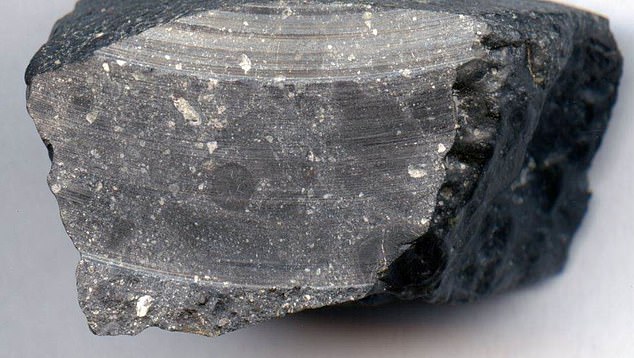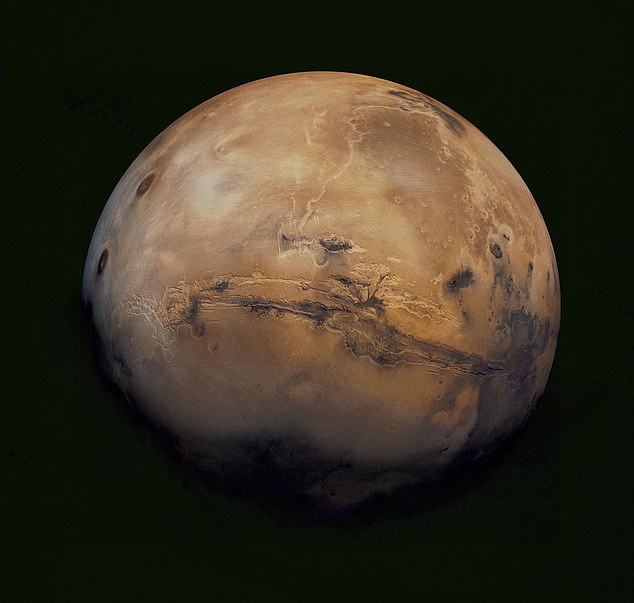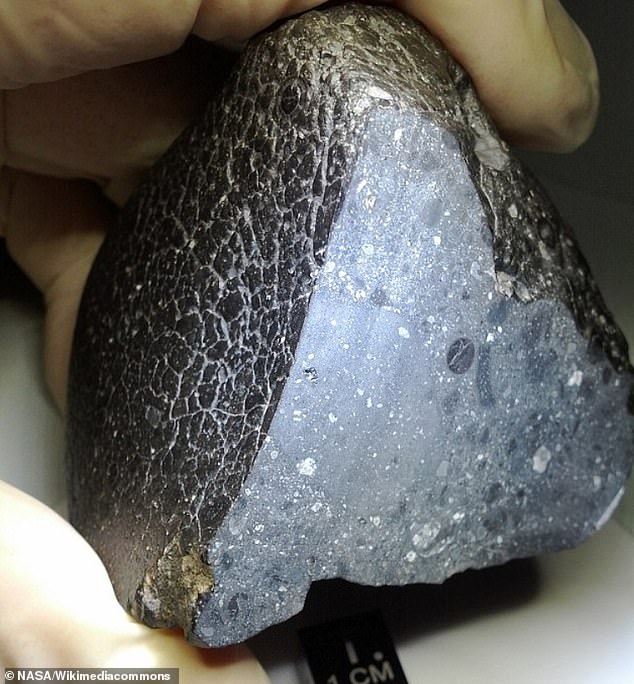A meteorite found in the desert is evidence of water on Mars 4.4 billion years ago

Analysis of a meteorite found in the Sahara Desert revealed water existed on Mars 4.4 billion years ago, scientists say.
The mineral composition of the Mars meteorite NWA 7533, found in 2012, reveals chemical signatures of oxidation – which would have occurred when water formed.
The 84-gram meteorite, partly named after its landing point in northwest Africa, was part of a celestial rock that shattered upon entering Earth’s atmosphere.
It is well known to planetary scientists that water has been present on the red planet at least 3.7 billion years ago.
But given the previously established age of NWA 7533 and its newly discovered mineral composition, the researchers now inferred that there was water present 700,000 more years before this estimate.
The NWA 7533 Mars meteorite, pictured here, is worth more than its weight in gold. Scientists were able to obtain a 50 gram sample for analysis # However,
If there was water on Mars earlier than previously thought, this indicates that the water may have been a natural byproduct of some processes early in the planet’s formation.
This could help answer the question about the source of the water, which in turn could influence theories about the origins of extraterrestrial life.
Study author Professor Takashi Mikuchi at the University of Tokyo said: “ Our NWA 7533 samples underwent four different types of spectroscopy – methods for detecting chemical fingerprints.
We found strong evidence for magma oxidation.
Igneous rocks, or fragmentary rocks, are formed in meteorites from magma and are usually caused by shocks and oxidation.
This oxidation could occur if there was water present on or within the crust of Mars 4.4 billion years ago during an effect that caused part of the crust to melt.
The analysis also indicates that such an effect would have released a lot of hydrogen.
“[This] It could have contributed to the warming of planets at a time when Mars already had a thick carbon dioxide insulating atmosphere.

If there was water on Mars earlier than previously thought, this indicates that the water may have been a natural byproduct of some processes early in the planet’s formation.
Nearly a decade ago, two meteors were discovered in the Sahara Desert, Africa – NWA 7034, found in 2011, and NWA 7533, found in 2012, for which Micucci and colleagues obtained a sample for analysis.
NWA stands for Northwest Africa and the number is the order in which meteorites are officially approved by the Meteoritical Society, an international planetary science organization.
Both meteors are already known to have come from Mars, thanks to comparisons from evidence collected by the Mars landers.
To confirm the Martian origin of NWA 7533, comparisons were made from NASA’s Viking mission in the 1970s, which landed some of the oldest man-made tools on the surface of the Red Planet.
Some of these meteorites contain trapped gas that matches the Martian atmosphere analyzed by the Mars Exploration Mission, NASA Viking.
NWA 7533 and the more famous NWA 7034, better known as “Black Beauty,” are all part of the same set of at least 10 parts, all with different numbers, according to Micucci.
He told MailOnline: “ These Martian meteorites have distinct oxygen isotope ratios, but they are identical from other extraterrestrial materials, so we know that they came from the same parent body.

Pictured is Black Beauty, or NWA 7034. A 2013 study of a Martian meteorite found it was 2.1 billion years old and rich in water.
They all fell to the ground due to the same event, but perhaps fragmented as they entered the atmosphere and were scattered across the Sahara Desert.
Later people picked it up separately and the shrapnel acquired different names.
In 2013, it was NWA 7034 It dates back 2.1 billion years – The second oldest martian meteorite after NWA 7533.
Scientists said at the time that a meteor the size of a cricket ball contained evidence of more water than any other Martian meteorite found on Earth.
A portion of NWA 7034 was donated to the University of New Mexico by an American who bought it from a Moroccan meteorite dealer.
Many of the Martian meteorites found today in the desert were found by Bedouin tribesmen who knew that the rocks could fetch a good price in the Casablanca market.
The new study was published in Science advances.

Communicator. Reader. Hipster-friendly introvert. General zombie specialist. Tv trailblazer





